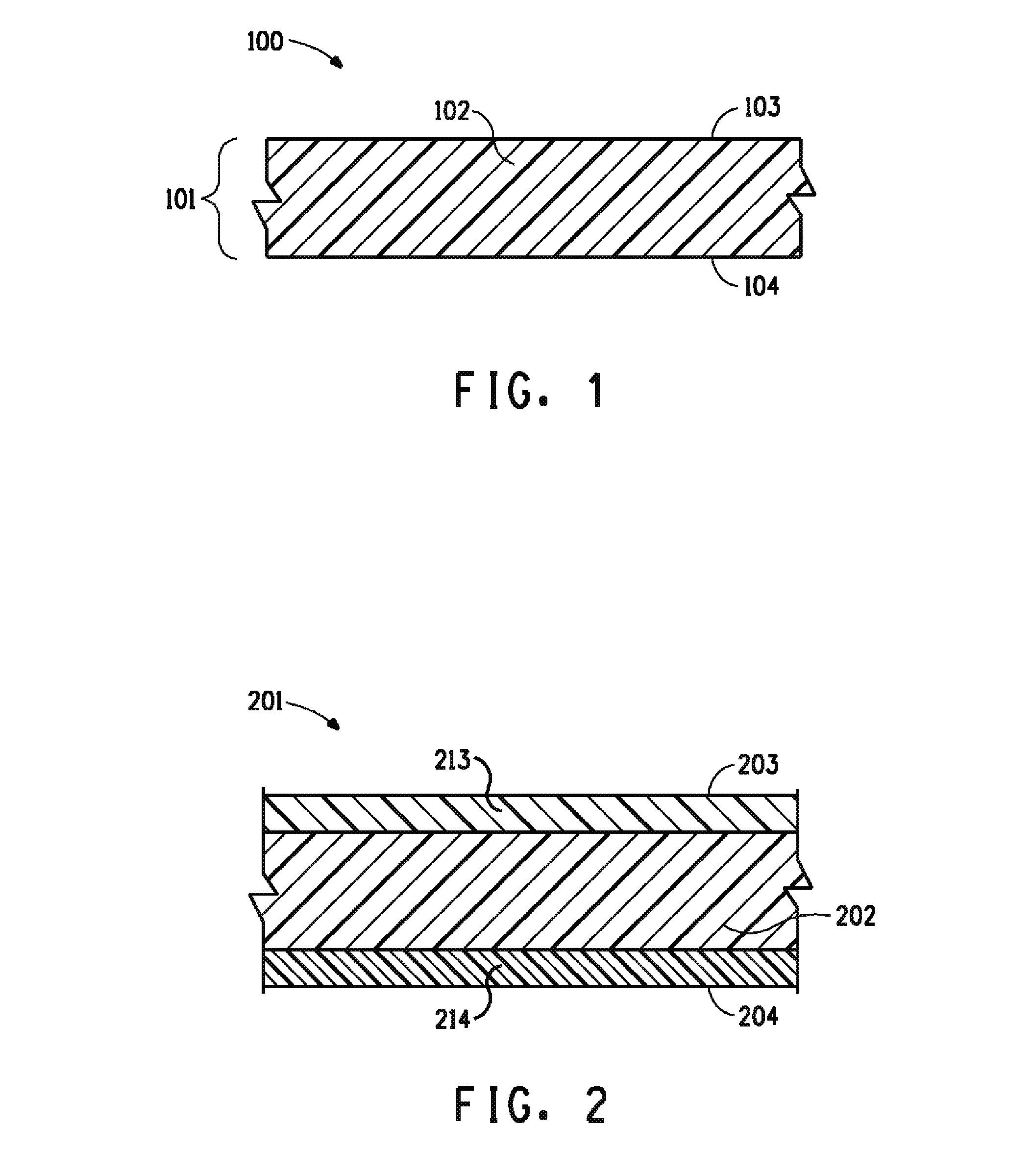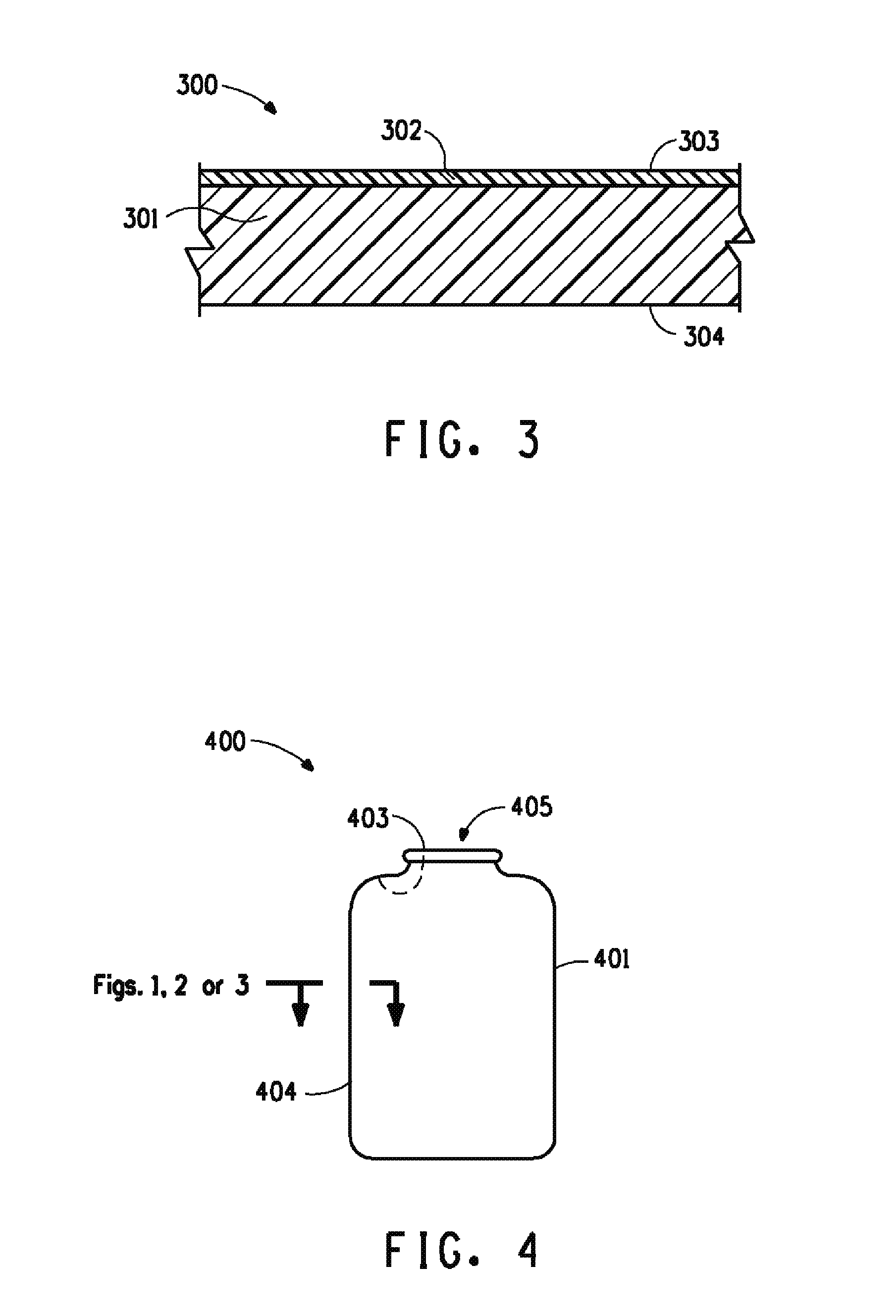Polyesters and articles made therefrom
a technology of polymer and polymer, applied in the field of polymer, can solve the problems of poor oxygen barrier, poor performance of polymer, and failure of polymer at high humidity
- Summary
- Abstract
- Description
- Claims
- Application Information
AI Technical Summary
Benefits of technology
Problems solved by technology
Method used
Image
Examples
example 1
Synthesis and solid phase polymerization of polytrimethylene-2,5-furandicarboxylate (PTF)
[0136]Preparation of PTF Pre-Polymers (PTF 1p-PTF 5p) by Polycondensation of bioPDOT™ and FDME
[0137]2,5-furandimethylester (2557 g), 1,3-propanediol (1902 g), titanium (IV) isopropoxide (2 g), Dovernox-10 (5.4 g) were charged to a 10-lb stainless steel stirred autoclave (Delaware valley steel 1955, vessel #: XS 1963) equipped with a stirring rod and condenser. A nitrogen purge was applied and stirring was commenced at 30 rpm to form a slurry. While stirring, the autoclave was subject to three cycles of pressurization to 50 psi of nitrogen followed by evacuation. A weak nitrogen purge (˜0.5 L / min) was then established to maintain an inert atmosphere. While the autoclave was heated to the set point of 240° C. methanol evolution began at a batch temperature of 185° C. Methanol distillation continued for 120 minutes during which the batch temperature increased from 185° C. to 238° C. When the temper...
example 2
Preparation of PTF Films (PTF-F) and Measurement of their Barrier Properties
[0141]PTF—3 prepared above was made into a 12.5×12.5 centimeter film by compression molding at 230° C. using a heated Pasadena press. Amorphous films thus made were analyzed by DSC to show low levels of crystallinity (2 and a thickness of 0.17-0.30 millimeter. Same amorphous film was used for measuring oxygen permeability rate at 23° C. at different relative humidities, as shown in Table 3.
TABLE 3Oxygen permeability rate of PTF-F-2.1at different relative humidites.OxygenPolymerPercent relativepermeability rateSample #usedhumidity(cc mil / m2 day atm)PTF-F-2.1PTF_304.03PTF-F-2.1PTF_350.35.11PTF-F-2.1PTF_377.44.34
[0142]The amorphous and crystallized films were tested for oxygen, carbon dioxide and water vapor barrier properties using MOCON instruments and results are summarized in Table 4 below.
Comparative Example
Preparation of a polyester from 2,5-furandimethylester and 1,4-butanediol (PBF)
[0143]1,4-butanediol ...
example 3
Synthesis and Barrier Properties of Copolymers PTF-co-PTT) Based on bioPDO™, FDME and Dimethylterephthalate
PUM
| Property | Measurement | Unit |
|---|---|---|
| Fraction | aaaaa | aaaaa |
| Fraction | aaaaa | aaaaa |
| Fraction | aaaaa | aaaaa |
Abstract
Description
Claims
Application Information
 Login to View More
Login to View More - R&D
- Intellectual Property
- Life Sciences
- Materials
- Tech Scout
- Unparalleled Data Quality
- Higher Quality Content
- 60% Fewer Hallucinations
Browse by: Latest US Patents, China's latest patents, Technical Efficacy Thesaurus, Application Domain, Technology Topic, Popular Technical Reports.
© 2025 PatSnap. All rights reserved.Legal|Privacy policy|Modern Slavery Act Transparency Statement|Sitemap|About US| Contact US: help@patsnap.com



